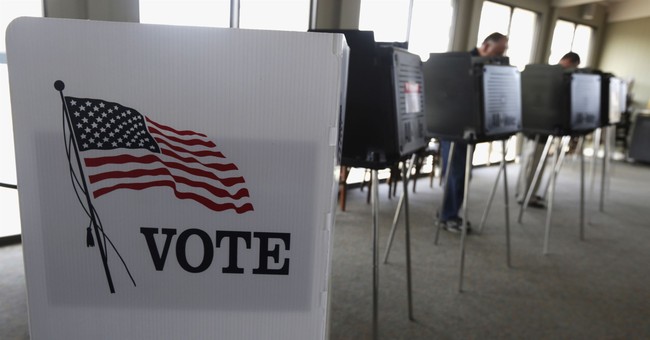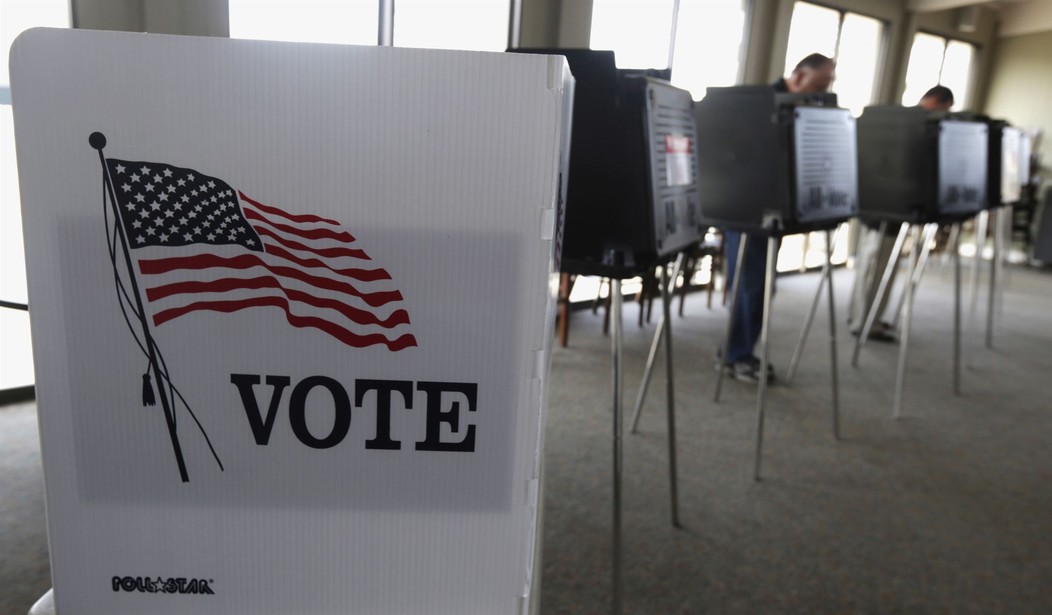 (AP Photo/M. Spencer Green, File)
(AP Photo/M. Spencer Green, File)There were a lot of polls off by a lot on Election Day 2016, but one of the states that wasn’t insanely wrong was Arizona. In the days leading up to the election, 4 polls showed Trump with a lead of 2, 4, 5, and 5 points respectively. Trump ended up winning the state by 3.5%, within the margin of error of all four of those final polls. While Trump won Arizona in 2016, it appears that Arizona is set up for quite the battle this year.
When it comes to Registration, Arizona still has a plurality of Republican voters, at 1,389,960 voters or 34.84% of the State’s voters. Independents make up 1,306,180 voters, or 32.74% and Democrats make up 1,293,074 voters or 32.41%. Since 2016, Democrats have gained more voters than Republicans, registering 201,751 voters compared to 150,346 voters for Republicans. Despite lagging in registration, Republicans have actually gained 0.3% in their share of the state’s voters since 2016, while Democrats have increased their share by 2.0% over that same time. It goes without saying that both of the major party gains came from losses from Independents and Third Party voters. Arizona, having seen an overall gain of 400,000 voters since 2016, shows a polarization where voters in Arizona re-registered as either Republican or Democrat over the course of the last 4 years. Just last year, Democrats out-registered Republicans by more than a 2-to-1 margin.
Arizona remains an outlier from the rest of the country for both polling and registration. Of the 6 states that offer data regarding registration by party, Arizona and Iowa are the only two states that Republicans have trailed their Democrat counterparts in registration. The other four, (which I will cover each in VIP analysis this week) all show Republicans outpacing Democrats. Arizona also shows a bit of a difference as the only state of the battleground states that I am analyzing this week, that failed to meet the RCP average FOR Trump. In every single other state of 2020 battleground states that Trump won in 2016, Trump outperformed the RCP average. Trump’s win was 3.5% with an RCP average of 4.0% on election day.
In current polling, Biden has an RCP average 2.7% lead in Arizona, which includes polls that run anywhere from 8 points in Biden’s favor (10/3) to 4 points in Trump’s favor (10/8). For this piece, I am going to consider the two most recent polls, on 10/7 (Reuters/Ipsos) and 10/8 (Trafalgar).
The Reuter/Ipsos poll taken 9/29-10/7 with a sample of 633 likely voters earns some pretty heavy criticism from me for numerous reasons. First, is that the poll’s methodology released doesn’t contain crosstabs for anything of note. In an analysis, I would like to see how people of each group voted and how they were weighted in the poll. The methodology for this poll also lacks any information on how they may have weighted ideology with participants to properly distribute the vote amongst the likely result. In other words, the poll that has 42% Democrat (+10 over registration), 12% Independent (-20 under registration), and 41% Republican (+7 over registration), suggests a +3 advantage to Dems, in a poll that only shows a 2 point advantage for Biden. In other words, the data for this poll shows that things are more likely tied or a point in Trump’s favor IF independents break down the middle, which I can’t tell from the provided methodology. Considering the results from 2016, which shows an 8 point advantage among Independents for Trump, there would have to be a double-digit swing in support from Independents for Biden to have any effect in the results of this poll.
Trafalgar also performed a poll in Arizona from 10/6 to 10/8 which is among one of the most accurate I have seen performed to date. I have previously voiced my concerns with their polls, but they are relatively minor considering some of the glaring mistakes made by other firms of late. First is that they use voter data in contacting voters instead of self-reported data from voters. Their sample of 1087 voters is among the larger samples conducted in Arizona and earns their relatively small margin of error of 2.89%. Another huge plus for this poll is that Trafalgar has taken the time to ensure that the proper samples are taken from all over the state, properly displaying that the samples are appropriate from each of the 9 Congressional Districts in the state. While I am unsure of their 45+ sample being as heavy as it is, that likely shouldn’t matter much as seniors 65+ have been less likely to double down on their Trump support in 2020. Trafalgar’s poll puts Trump up 4% in Arizona, one of two polls showing Trump with a lead, and the largest Trump lead to date in Arizona. Trafalgar has also been widely seen as among one of the most accurate firms of 2016 and the 2018 midterms.
If the election were held today, Arizona is probably the only state that I’d say flip a coin over. Registration statistics and recent polling data show that Trump’s 2016 hold on Arizona is shaky at best. If Trump were to underperform by a half-point based upon the current RCP average, he would lose the state by 3 to 3.5 points. That being said, Trafalgar’s most recent poll provides for a decent argument that Trump currently leads in the state but if factoring for the worst-case scenario and the margin of error, puts Arizona in a dead heat.
As I said before Arizona will come down to the wire. Stay tuned for tomorrow’s state of analysis, North Carolina.













